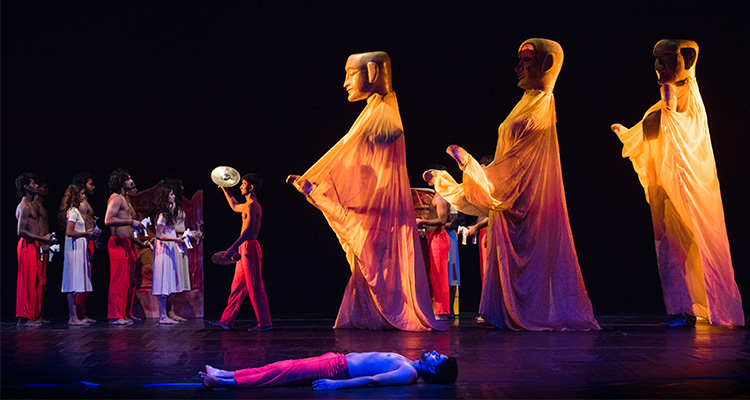After Death – A Spiritual Journey
META 2016 spread its wings with the showcase of first proscenium play of the festival named After Death — A Spiritual Journey, directed by Vikram Mohan.
The play came into existence due to two major factors:
1) Directors insistent belief in supernatural powers and,
2) His friends research in the rituals of Bhil tribe.
After being acquainted with Bhil tribes way of living, Vikram decided to take a tour of all the places where the Bhil tribe still exists in their own world. He was mesmerized by their folk tales especially with the belief that even after death the existence of a person remains intact and certain rituals must be performed in order to prepare for the spiritual journey of the departed spirit. Similar to the Native-American tribes, Gathalas or the ‘spiritual stones’ are raised for the spirits to reside in them. To a modern mind this may seem superstitious but Bhooshan Bhat argues very aptly — why should we assume that they are wrong or deluded? According to him, in other cultures such as Hinduism or Christianity, the world of the dead has connotations of fear and danger but in the Bhil culture a sense of mysteriousness is there because their ancestors are both the preservers and the destroyers of the clan and we should respect that.
The plays story moves around the life of a widow whose dead husbands spirit is believed to be disturbed by her affair with another man. The villagers are not happy with this and want to ‘sati’ her. ‘Sati’ was an ancient Indian practice of a widow burning herself at her husband’s funeral pyre or committing suicide shortly after her husband’s death in another manner.
To depict this scenario sound, lights and props were used very artfully. The use of five elements was phenomenal in the play. Water was used instead of fire to contrast the feminist aspect of ‘Sati.’
The USP of the play was its sound with original recorded music which couldnt be produced in a studio such as wind patterns, lamentation of women etc. The use of non-musical instruments made the drama ephemeral. The trance was created using the Singing Bowl and the rhythmic sounds of bamboo sticks took the music to an another level.
A combination of three lights (red, green and white) was used to match the ambience of the sound.
To break the restrictions of Indian classical dance forms, dance techniques of Tango and Release Work were incorporated to the performance. Through the force and agility of the trained bodies, this group of artists made the audience speechless without uttering a single word.
The rhythm and resonance of the bodies, the fluttering bass of the music and the sensual profundity of the presentation were simply beyond description.
— Abhishek Tiwari




Leave a reply